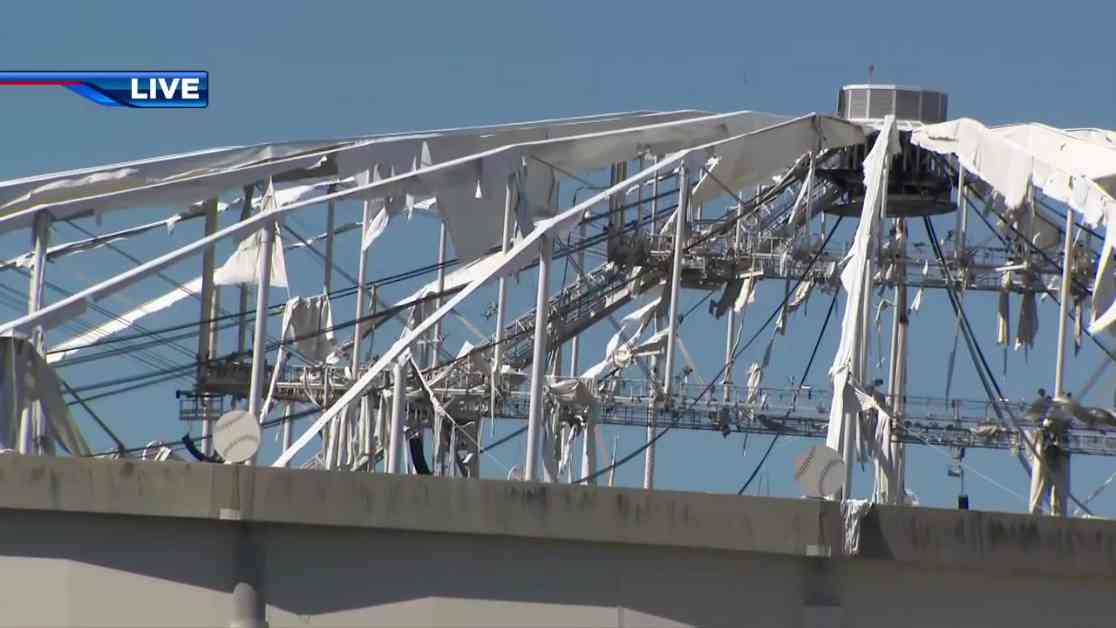Hurricane Milton recently caused extensive damage to Tropicana Field, the home of the Tampa Bay Rays. The storm tore apart the roof panels, scattering debris across the field and seating areas. Fortunately, only a few essential personnel were inside the stadium when the hurricane hit, and no injuries were reported.
This unfortunate event is just the latest in a series of sports venues being severely damaged by extreme weather conditions. For example, back in December 2010, heavy snow caused the roof of the Minnesota Vikings’ Metrodome to collapse, leading to the delay and relocation of a scheduled game. The stadium was eventually replaced four years later.
In May 2009, the Dallas Cowboys’ practice facility collapsed during a wind storm, resulting in injuries to several players and coaches. Two individuals suffered severe injuries, with one being permanently paralyzed. Similarly, in 2008, a severe storm ripped a hole in the roof of the Georgia Dome during a tournament, causing a delay and evacuation of the venue.
One of the most well-known cases of a sports venue being damaged by a natural disaster is the Superdome in New Orleans during Hurricane Katrina in 2005. The stadium was being used as a shelter for thousands of people when parts of the roof started peeling off. The flooding caused by broken levees forced the evacuation of the Superdome, and the New Orleans Saints had to play their entire season on the road.
The cost of repairing these damaged sports venues can be significant, as was the case with the Superdome, which required approximately $185 million in repairs before reopening for the Saints’ first home game in 2006.
These incidents serve as a reminder of the destructive power of natural disasters and the importance of ensuring the safety and stability of sports venues in the face of extreme weather conditions. It is essential for teams and officials to have contingency plans in place to protect both the facilities and the individuals who use them.


